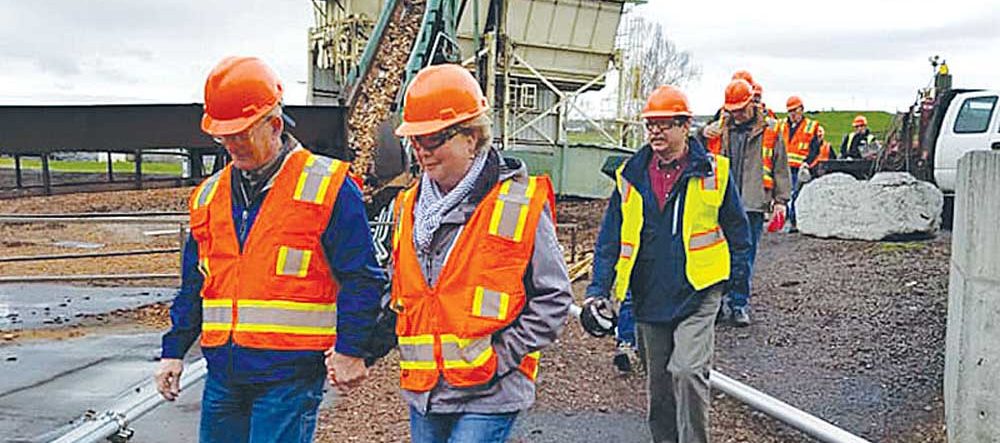Intermodal facilities get first round of funding
Published 12:00 pm Thursday, September 19, 2019

- A container truck loaded with straw pulls away from a pressing facility owned by the Boshart family in Salem. Straw is one of the agricultural exports that could benefit from an intermodal facility that switches containers from trucks to rail in the mid-Willamette Valley. The proposed Millersburg facility received a first round of funding Sept. 18 from the Oregon Transportation Commission.
THE DALLES — Oregon transportation officials have authorized the first round of funding for two truck-to-rail intermodal facilities intended to boost the efficient shipping of farm products.
To receive most of the remaining grant money, however, project sponsors must still prove the planned facilities in the Willamette and Treasure valleys are financially viable and have commitments from railroad companies.
“We’re not releasing the funding in bulk, we’re releasing it by project element,” said Robert Van Brockton, chairman of the Oregon Transportation Commission. “We don’t want to get ahead of ourselves, is the bottom line.”
At its Sept. 18 meeting in The Dalles, the commission voted unanimously to release $525,000 for an onion-focused intermodal facility in Nyssa and $376,000 for one in Millersburg aimed at shipping containers by rail to ocean ports along the Puget Sound.
That money will reimburse project sponsors for drafting preliminary project plans, writing detailed financial statements and preparing for land purchases.
“We want to be sure we have a functional facility at the end of the day,” said Erik Havig, planning section manager for the Oregon Department of Transportation, which is overseen by the commission.
In 2017, lawmakers allocated $25 million for the Willamette Valley facility and $26 million for one in the Treasure Valley, but sponsors will need to complete additional milestones and obtain permission from the commission at least twice more before accessing all of the available cash.
While transportation officials are “hopeful these things will be hugely successful and pencil out,” the incremental approach is intended to avoid putting all of the grant money at risk, Havig said.
If the commission decides to cut off funding for one or both of the projects at some point, the remaining money will revert back to the Connect Oregon fund for transportation projects, Havig said.
Before the commission decided to move forward with the two intermodal projects in July, an independent economic analysis determined that both still face serious questions about being self-sustaining financially.
The Millersburg proposal came under particular scrutiny because the third-party economic consultant found that it’s unlikely to be subsidized by ocean carriers, which help make empty containers available to similar facilities in Portland at a lower cost.
However, the commission ultimately decided to let the projects proceed as long as they were able to meet additional conditions.
To win the second round of funding approvals, most likely next spring, project sponsors will likely have to submit the necessary documents to the commission, Havig said.
“They will need to come back to the commission with a report to demonstrate that financial viability,” Havig said.
If they succeed, the sponsors will be able to buy land, complete final designs and obtain necessary permits, he said. They are then expected to approach the commission for a third round of funding later in 2020.
Significantly, they will need to secure contracts with major railroads to serve the facilities to obtain money for building. “Before we begin construction, we want to make sure that’s locked up,” Havig said.
It’s possible the commissioners may be asked for additional clearances for the projects to go more than 10% over budget or receive extensions of 90 days, he said. “They just want to be sure it’s justified,” he said.









